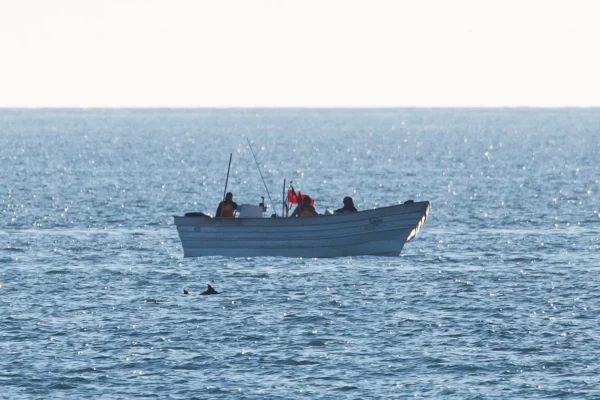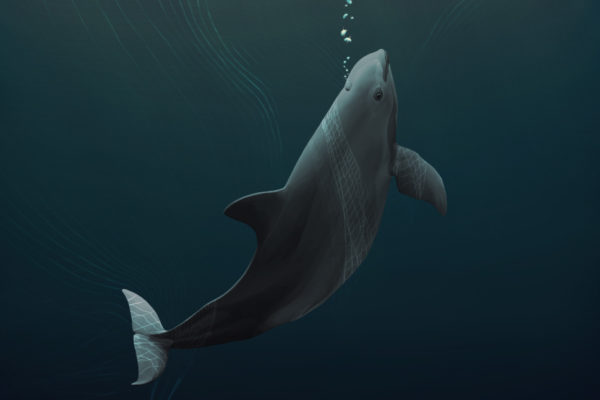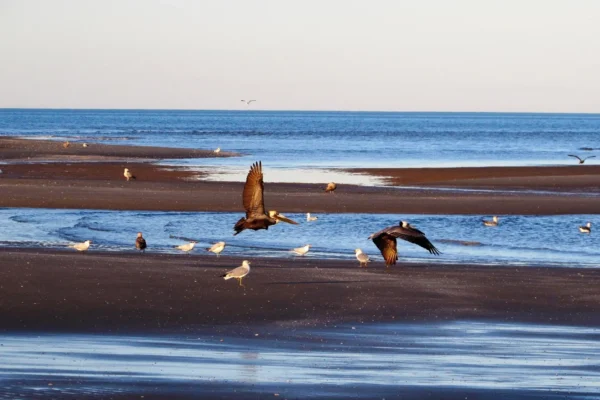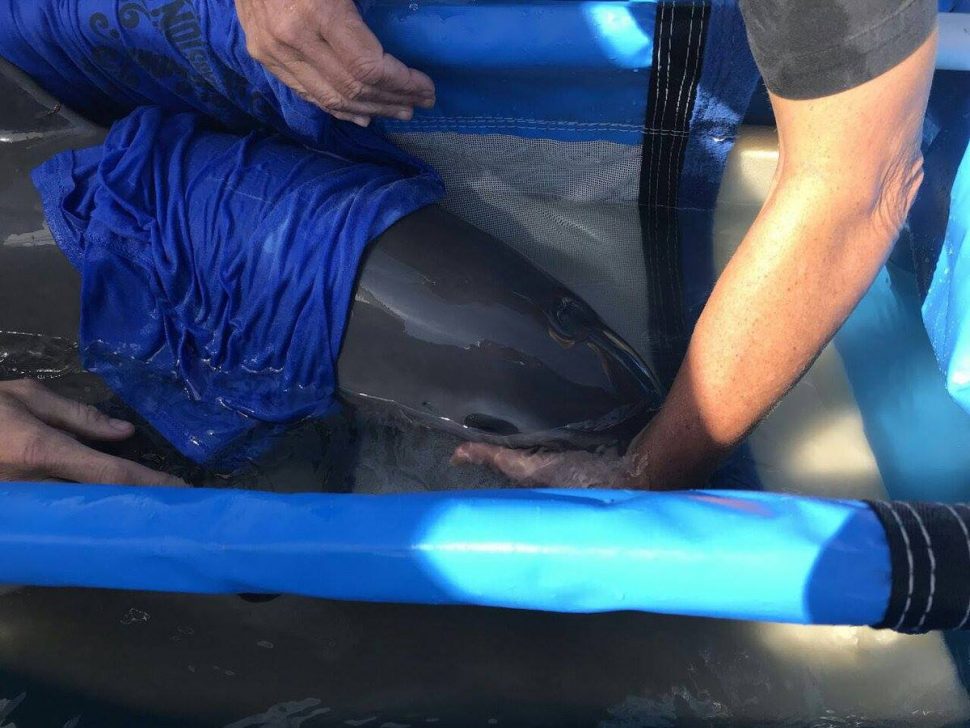
A last-ditch attempt to save the vaquita ends without achieving its mission
It’s been a turbulent four weeks for the international team that the VaquitaCPR rescue mission had assembled in Mexico to try and save the vaquita, the world’s most endangered marine mammal. And they all knew what they had signed up for: a mission that would have to overcome some enormous challenges to beat the odds stacked against a success.
The goal was to capture some of the last vaquita and to temporarily move them to a habitat where they would be safe from entanglement in gill-nets, the only major threat this species faces. The intention was to move the animals back to their natural home once it was considered safe for their return.
Scientists had previously determined that less than 30 animals remained of the vaquita’s only population in the Upper Gulf of California, the Sea of Cortez. This effort was meant as an insurance policy for the rapidly declining population. The bold plan came with significant risks, but given the alternative — near-certain extinction — conservationists felt they had an obligation to try.
Learn more about the vaquita
Related Articles
- Last-ditch attempt to save the vaquita to begin in Mexico
- Scientists successfully capture, examine and release vaquita
Knowledge Base

Today, that mission is coming to a conclusion after a full month of field operations. Following a major setback on November 4th with the loss of an adult female vaquita that did not survive capture, the project’s scientists spent the last few days on a survey mission, documenting and photographing individual vaquita for conservation purposes.
An independent review panel had come to the same conclusion as the mission’s lead scientists, that the best course of action was to cease the capture attempts following recent events. That outcome had always been a possibility as scientists first needed to find out whether it was feasible at all to capture vaquita and to keep them alive in a protected habitat, before moving on to the next stage. No vaquita had ever been kept in captivity for any period of time, so success was never taken for granted.
A lot of hope rested in the rescue & relocation mission as the measures to remove all gill-nets from the Sea of Cortez had not stopped the decline of the population. A ban of gill-nets first introduced in 2015 did not prove entirely effective as illegal fishing continued.
The international recovery team with CIRVA believed that extinction was imminent, calling for desperate measures to save the species and recommending that the capture effort be undertaken as an additional component to a conservation effort that has already lasted decades.
With all efforts to capture vaquita now suspended, the future of the small population looks more uncertain than ever, with likely no more than 20 individuals remaining.
Mexican government and conservationists vow to continue their efforts
The plan to capture vaquita and move them to a safe habitat was just one component in a larger conservation effort, meant not to replace but to complement what has already been in place and is now set to continue.
The Mexican government has already announced that it remains committed to its efforts to save the vaquita porpoise from extinction. Mexico’s environment minister, Rafael Pacchiano, tweeted: “We have sighted several groups of vaquita, mothers with their children, which is a good sign. The conservation of the vaquita will remain a priority and we will continue working to protect it.”
Despite the setbacks, conservationists are determined to not give up either. The rescue mission has created a renewed interest in the plight of the vaquita and brought the elusive animals back into the media spotlight. They want to use the new momentum to push on with their mission to prevent the vaquita’s extinction.
But with a population this small, they are facing an uphill battle. Illegal fishing with gill-nets for the totoaba continues in the Sea of Cortez. Conservationists and the Mexican government will have to keep up the fight for many decades if the vaquita is to have any chance at all.
Particularly the removal of derelict and abandoned fishing gear and the enforcement of the now permanent gill-net ban and the fight against poachers will have to be a priority. The entire region is also affected by socioeconomic issues that the Mexican government will have to address. The vaquita’s situation does no longer leave the smallest margin for error.
Being a part of VaquitaCPR and the international team of experts assembled has been an inspiration. This team demonstrates what is possible when people are united for the conservation of a rare, difficult to find species. Together we’ve experienced success, heartbreak and what seemed to be almost impossible challenges. Collectively, these experiences have served to further strengthen my commitment to the future of the Vaquita and the other six porpoise species around the world.
Dr. Anna Hall, President, Porpoise Conservation Society
Gill-nets and other man-made threats affect porpoises around the world
Vaquita are not the only porpoises in trouble. There are others that are far less known but already on a similar path. Worldwide, more than 300,000 whales, porpoises and dolphins die in fishing nets every year. Porpoises are frequently among the victims.
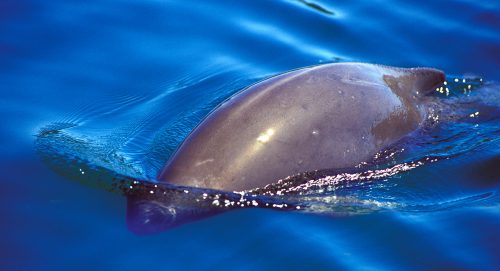
South America: Burmeister’s porpoise
One of the vaquita’s closest relatives lives in South America. The little-known Burmeister’s porpoise (Phocoena spinipinnis) frequently gets caught as incidental by-catch in fishing nets, is used as bait in fisheries – and even ends up on people’s dinner plates.
Particularly in Peru, small cetaceans are still regularly hunted for consumption despite laws to protect marine mammals. A scientific investigation showed that Burmeister’s porpoise make up a significant proportion of the catch. Scientists had previously noted a decrease of the relative abundance of Burmeister’s porpoise where the animals were hunted, and more recently observed that the proportion sold at markets had also decreased.
It’s possible that the distribution of Burmeister’s porpoise has changed, or that the depletion of fish stocks is to blame – but it is also possible – and likely – that there are simply fewer animals left to catch. Research suggests that 60-250 animals are taken per year in Peru alone, but nobody really knows what effect these unregulated takes are having.
While there are population size estimates for many species, in the case of the Burmeister’s porpoise so little data is available that the International Union for the Conservation of Nature (IUCN) lists the species as “data deficient”. It could as well be on the path to extinction.
Asia: Yangtze finless porpoise
Another of the vaquita’s cousins lives in China and once shared a habitat with the now-extinct baiji river dolphin (Lipotes vexillifer). The Yangtze finless porpoise (Neophocaena asiaeorientalis asiaeorientalis), a subspecies of Narrow-ridged finless porpoise, is also listed by the IUCN as “critically endangered” and facing extinction.
A survey in 2012 found that only about 500 animals remain outside of the reserves established for the finless porpoise. While by-catch in fishing nets and boat strikes account for some losses, this population is also affected by habitat loss and habitat degradation.
Research shows that heavy habitat-quality deterioration in the Yangtze river has been occurring for decades. And while the Yangtze finless porpoise’s habitat is becoming increasingly inhospitable, conservationists are looking for ways to move the animals out of harm’s way.
Habitat restoration will take the efforts of generations, time that the finless porpoise does not have. So as in the case of the vaquita, both in situ (within the natural habitat) and ex situ (outside the natural habitat) conservation measures are being considered.
Yangtze finless porpoise have previously been captured and moved to freshwater lakes where they have since been reproducing. Scientists believe that more of those ex situ reserves are necessary, along with additional in situ reserves throughout the population’s range.
Europe: Baltic Sea harbour porpoise
Even the otherwise very abundant harbour porpoise (Phocoena phocoena) is at risk in parts of its range. The Baltic Sea subpopulation of harbour porpoise is facing extinction and is listed by the IUCN as “critically endangered”. The primary reason for the decline of this population is also entanglement in fishing nets as by-catch. The harbour porpoise is a protected species throughout the waters of the European Union, but measures to prevent a further decline of the population still need to be implemented.
References and Further Reading
- CIRVA (2016). Seventh Meeting of the Comité Internacional para la Recuperación de la Vaquita. .
- Mangel, Jeffrey C. ; Alfaro-Shigueto, Joanna ; Van Waerebeek, Koen ; Cáceres, Celia ; Bearhop, Stuart ; Witt, Matthew J. ; Godley, Brendan J. (2010). Small cetacean captures in Peruvian artisanal fisheries: High despite protective legislation. Biological Conservation.
- Tzika, Athanasia C. ; D’Amico, Eva ; Alfaro-Shigueto, Joanna ; Mangel, Jeffrey C. ; Van Waerebeek, Koen ; Milinkovitch, Michel C. (2010). Molecular identification of small cetacean samples from Peruvian fish markets. Conservation Genetics.
- Alfaro-Shigueto, Joanna ; Mangel, Jeffrey C. ; Van Waerebeek, Koen (2008). Small cetacean captures and CPUE estimates in artisanal fisheries operating from a port in northern Peru, 2005-2007. Scientific Committee Meeting Documents.
- Mei, Zhigang ; Zhang, Xinqiao ; Huang, Shiang-Lin ; Zhao, Xiujiang ; Hao, Yujiang ; Zhang, Lin ; Qian, Zhengyi ; Zheng, Jinsong ; Wang, Kexiong ; Wang, Ding (2014). The Yangtze finless porpoise: On an accelerating path to extinction?. Biological Conservation.
- Wang, Yamin ; Li, Wei ; Van Waerebeek, Koen (2015). Strandings, bycatches and injuries of aquatic mammals in China, 2000–2006, as reviewed from official documents: A compelling argument for a nationwide strandings programme. Marine Policy.
- Benke, H. ; Bräger, S. ; Dähne, M. ; Gallus, A. ; Hansen, S. ; Honnef, C. G. ; Jabbusch, M. ; Koblitz, J. C. ; Krügel, K. ; Liebschner, A. ; Narberhaus, I. ; Verfuß, U. K. (2014). Baltic Sea harbour porpoise populations: status and conservation needs derived from recent survey results. Marine Ecology Progress Series.
